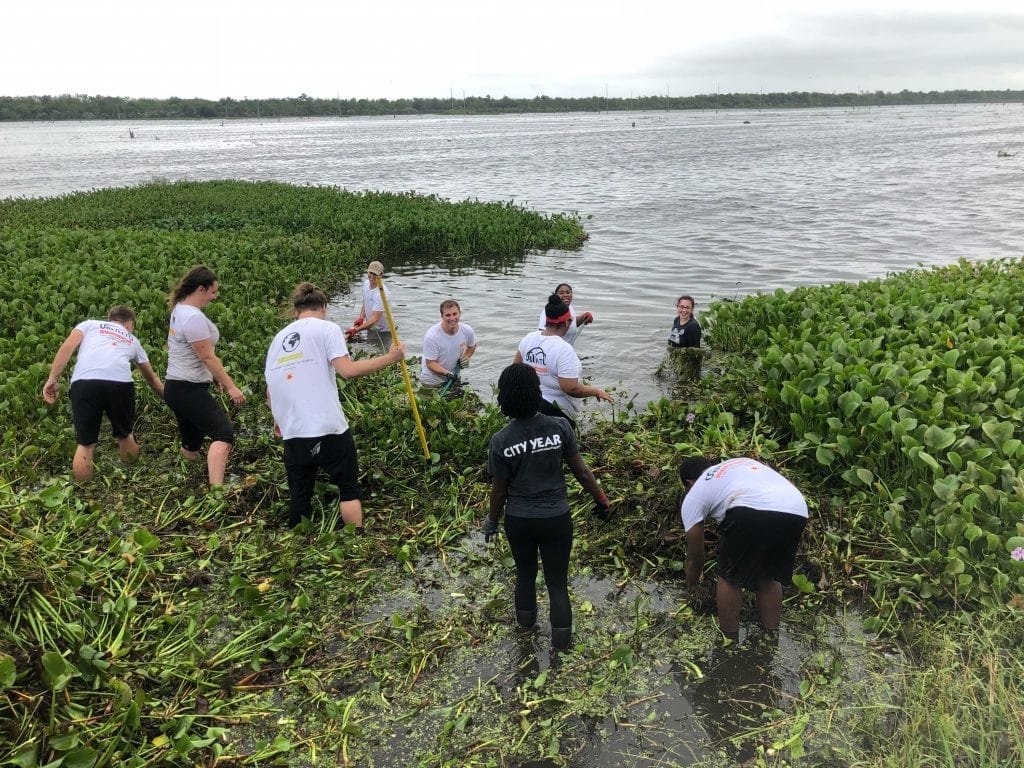
In New Orleans’ 7th Ward neighborhood, Jeraldine Galle, 81, is back in the house she’s owned for more than 60 years. But in 2005, the house was flooded with 10 feet of water after a nearby canal ruptured as Hurricane Katrina approached the Gulf Coast. Afterward, fraudulent contractors delayed her return and threw her into a depression that often left her in tears whenever she talked about how she’d raised six children there with her late husband, Floyd, a truck driver for the local McKenzie’s bakery.
But after six years, she’d made it home, with the help of a nonprofit rebuilding agency that came in to help her. “There’s nothing like your own,” Galle had said, as she turned the key in her front door.
At first, she was ecstatic about being inside her own house. She loved sitting on her front porch, listening to after-school practices by the nearby St. Augustine Marching 100, one of the city’s foremost high school bands.
Still, her mind was not at ease. Before Katrina, Galle knew nearly everyone who passed her porch on Annette Street. Now, many were strangers. A good share of the houses on her block were still empty, because homeowners had died or experienced fraud or money shortages that stopped them from rebuilding. Without that neighborhood network, she didn’t really understand which blocks were struggling with gun violence and why.
Then, a few years ago, a gunman who was chasing another man shot into a neighbor’s house. Galle started avoiding her porch after sunset. The depression returned.
Though her struggles may seem personal, they are also part of a structural community issue that needs to be addressed before New Orleans and its citizens can truly thrive, in a way that makes it more resilient to the next natural disaster. Or at least that’s the thought behind the new municipal resilience strategies that are cropping up around the world, with the help of 100 Resilient Cities, a Rockefeller Foundation initiative.
In August 2015, as New Orleans somberly marked the 10th anniversary of Katrina, it became one of the first cities to finish the Resilient Cities process. Its city hall released a 90-page resilience strategy and created a new position, chief resilience officer, to integrate the city’s resilience activities into a unified agenda.
At the same time, people across New Orleans had became weary of the word “resilience,” which had become a buzzword around the storm’s 10th anniversary, bandied about in shallow mentions of people who had rebuilt and returned after Katrina, without acknowledging the toll the storm had taken.
Resilience strategies, as envisioned by 100 Resilient Cities, are meant to go far beyond that simplistic use of the word to create road maps for stronger cities around the world, with stronger economies and more sustainable environments, with more green infrastructure.
“We must align our infrastructure and urban environment with the realities of our delta soils and geography,” the New Orleans report reads. “Our adaptation must be both physical and behavioral. Rather than resist water, we must learn to embrace it.” Infrastructure, especially related to water, is crucial to many other Resilient Cities plans. A high proportion of the cities identify a water issue—either too little or too much—as their top concern. In New Orleans, the prevailing threats are severe storms, hurricanes, and floods, along with the sea level rise driven by climate change.
Yet there’s a growing consensus that cities cannot weather the effects of climate change without going beyond infrastructure to address institutional racism, violence, and historical inequities in income, education, housing, and access to physical and mental health.
Sometimes this more holistic focus is called “just resilience,” because it builds stronger communities by acknowledging that unjust, historical frameworks placed more vulnerable people at risk in cities around the world.
“For decades, social-science researchers have clearly demonstrated that the majority of those who live in the most vulnerable places are the most vulnerable people,” said sociology professor Lori Peek, who directs the Natural Hazards Center at University of Colorado Boulder. “The poor, racial minorities, the elderly, children, and persons with disabilities are the ones who are more likely to reside in shoddily constructed homes located in low-lying areas. They are the ones without air conditioning on excruciatingly hot days. They are the ones less likely to own cars that would allow them to escape when ordered to evacuate.”
That rings true in New Orleans where, when compared with white homeowners, African-American homeowners were three times as likely to live in neighborhoods that flooded. With higher devastation often came more depression and anxiety.
An ambitious study led by the Louisiana State University Health Sciences Center is building on a community mental-health project begun after Katrina to address community resilience beyond the four walls of a clinic. The study, called C-LEARN (Community Resilience Learning Collaborative and Research Network), includes collaborations with grassroots partners and is funded by the National Academy of Sciences Gulf Research Program.
“It’s not sufficient to provide doctors and psychiatrists and Prozac pills—we have to help communities realize the assets they have,” said Dr. Benjamin Springgate, chief of the section of Community and Population Medicine at LSU Health New Orleans School of Medicine. Springgate has worked with partners to provide mental health services in the wake of disasters in cities like Houston, New York City, and San Juan, Puerto Rico.
“If we can recognize that the national climate change report is pretty damning about survival for many parts of our country, including our community, but we feel this is worth fighting for, we have to push ourselves to see what more can we do,” Springgate said. “If we didn’t like that so many people were displaced after Katrina, if we didn’t like that entire social networks got wiped off the map and that so many people in Gentilly or New Orleans East or the Lower 9 didn’t come back, we have to be a stronger community in advance of the next threat.”
There’s a growing consensus that in a world that always has insufficient resources, networks make communities stronger. As seismologist Lucy Jones wrote in The Big Ones: How Natural Disasters Have Shaped Us (And What We Can Do About Them), once the physical infrastructure is gone, the social infrastructure is all that’s left. “Although natural hazards are inevitable, human catastrophes are not,” she wrote.
“It takes more of a village to handle massive problems,” Springgate said. “As we look at the impact of climate change not just along the Gulf Coast but across the United States and around the world, we know that wildfires, sun-baking effects, deluges, floods, hurricanes, frigidly cold temperatures will be superimposed on social risk factors and have an effect on mental health,” he said.
Creating Emotional Well-Being Through a Neighborhood Hub
Though it sits near the grand mansions of Esplanade Avenue, St. Anna’s Episcopal Church has long been a gathering spot for diverse crowds because it’s located a few blocks from the French Quarter in an historically working-class area of the city. In 2005, after Katrina, its location had another advantage: because Esplanade sits on a land ridge, the church didn’t flood.
The church was a natural partner for the C-LEARN study, which will help church staffers learn how to build on the lessons that they learned on the fly after Katrina, said Diana Meyers, St. Anna’s director of mission and wellness.
In 2005, St. Anna’s became a key hub, along with a few other high-ground churches and community centers. Very early on, the church worked with partners to start a mobile health van, basically a clinic on wheels that helped neighbors get medicine and treatment for the “Katrina cough,” a respiratory condition common during the post-storm months, along with chronic conditions like high blood pressure and diabetes. But that wasn’t enough.
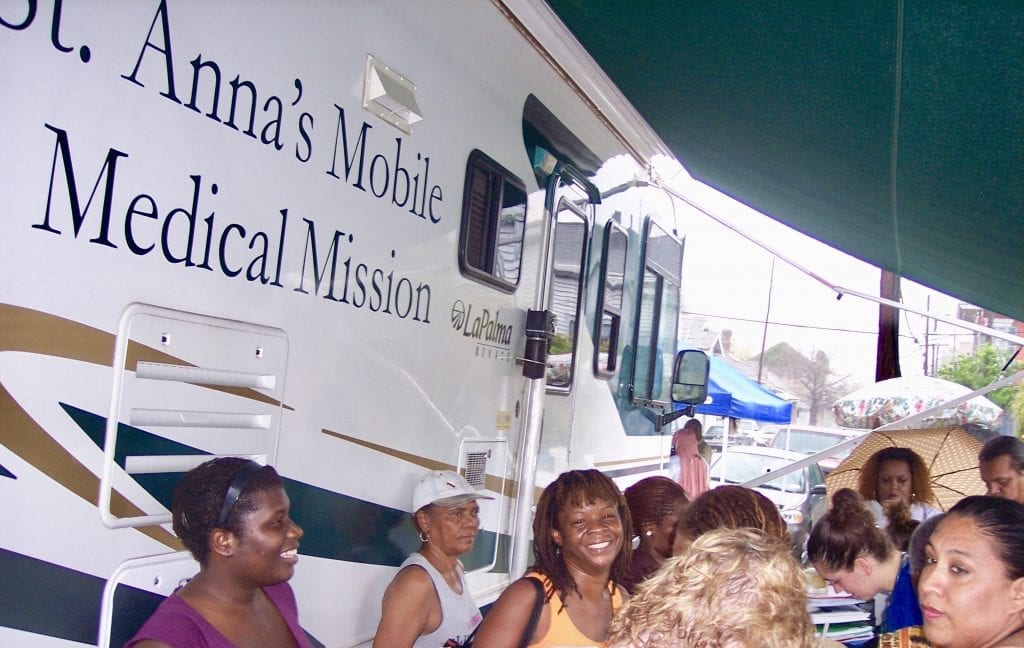
“We started realizing that people needed to talk: they had depression and post-traumatic stress disorder,” said Meyers. Luckily, the church had a parishioner whose daughter worked in the psychiatry department at Tulane University School of Medicine and was able to connect the church with a supply of Tulane psychiatry residents and students. “People felt comfortable talking in the van; it was a relaxed atmosphere, as opposed to hanging a shingle outside that says ‘psychiatry’ and feeling the stigma that comes with that.”
The ease of that Tulane linkage is at the heart of C-LEARN’s emphasis on connecting churches, government agencies, and nonprofits into networks that know and trust each other. That way, if disaster strikes, people at hubs like St. Anna’s know who else they can rely on.
The talking seemed to help people, Meyers remembers. So St. Anna’s hired New Orleans musicians to play weekly concerts in the church. It employed musicians who had no gigs and then staffed the concerts with mental-health professionals who neighbors could talk to and, if desired, make future appointments with. They found that when people gathered to hear music, it had therapeutic effects on its own. “It was the community atmosphere, the ‘I’m OK, you’re OK’ or ‘I’m not OK, but you’re not either,’” she said. They hosted art-therapy sessions and drum circles where they asked people to shout out what they were thinking as they played congas, bongos, and timbales.
Community-health workers, placed in hubs like St. Anna’s, also joined teams that went door to door in neighborhoods to screen and educate. “Depression is treatable,” they might say to someone who scored high on a screening tool. They would then follow with suggestions of how that person could address depression or give them a referral to get into care.
Those workers were part of the community-academic collaborative program REACH-NOLA, which laid the groundwork for C-LEARN during the year after Katrina, when so many people felt symptoms of PTSD, depression, or anxiety, but the metro New Orleans area had only 22 psychiatrists still practicing there. Tiers of others were part of the collaborative, such as therapists who were trained in cognitive behavioral therapy to address depression, and primary-care doctors, who were trained how to help their patients manage depression and anxiety.
The idea was that a collaborative model could best provide services in a resource-poor area.
St. Anna’s children’s program hosted group-therapy classes, where kids could talk about fears and anxieties. They could discuss why they were scared every time it rained after Katrina or how they didn’t know anyone in their new school.
Some people couldn’t talk until their lives were more stable.
‘It’s not sufficient to provide doctors and psychiatrists and Prozac pills—we have to help communities realize the assets they have.’
“If you don’t address basic survival issues, you can’t address mental health,” Meyers said. “If someone is hungry or doesn’t have clothes, they don’t think about their depression. If they don’t have anywhere to live, you provide them with a list of a few legit people who are working to help. Only then can you begin to address Katrina anxieties.”
The learn-as-you-go approach had shortcomings, Meyers said, because it took a while to learn what other social-service providers or community agencies were doing: who was handing out food, who was providing physical or mental health care, or who had put together a group of lawyers or advocates to help families get duplicates of documents lost in the flood, or complete grant applications for rebuilding homes.
As part of the C-LEARN process, every participant will receive technical assistance through webinars on four topics: financial assistance, disaster planning, housing, and mental health. Then half of the providers will be selected randomly to build coalitions with one another. The study results will show whether coalition-building has an additional effect.
Meyers has found the financial planning information to be helpful for households that regularly asked the church for help paying electricity bills or rent. “A lot of families live day to day, dollar to dollar,” she said. “They get their money, they spend their money.” Afterward, they’ve seen family members join job-training programs or get hired for a new job, based on information that St. Anna’s provided. “We feel like we’ve done something to build the resilience of those families,” she said.
It’s also a continuing priority at St. Anna’s to decrease the stigma surrounding the mental-health challenges and depression often faced at high levels after disasters. “As we found out after Katrina, we’ll all suffer from it,” Meyers said.
For Meyers, it makes sense that creating a trusted coalition now would be beneficial if/when another disaster strikes. “If we already have contact info for other organizations, we can call and say, ‘We’re up and running, what do you have?’ Or ‘I’m flooded, can you provide this?’”
Drawing on History to Keep a Neighborhood Healthy
Arthur Johnson has a community office, a restored house that serves as home base for the Center for Sustainable Engagement and Development (CSED) in the Lower 9th Ward. So people stop in. “We talk with them and get to hear their stories,” he said. Sometimes, those conversations end with a referral for further mental-health services elsewhere. Other times, he can steer people toward practical solutions to expedite their main struggles—by connecting them to rebuilding agencies, social services, or volunteer attorneys. But often, after frustrating days, people just need to vent. “Even though it’s been 14 years since Katrina, people still have a lot inside,” he said. “What we do is listen and let people exhaust what they’re feeling inside.”
Despite the devasting flooding his neighborhood suffered in 2005, Johnson can see signs of resilience. Construction is slow, but ongoing. Thanks to work done by his nonprofit and others, the houses around him are dotted with solar roof panels: the Lower 9 rebuilt after Katrina with some of the highest per-capita rates of solar in the nation. A nonprofit called Groundwork New Orleans even partnered with the Small Center in the community arm of Tulane School of Architecture to build solar-powered bus-stop benches that could be used to charge cell phones after a disaster. Neighbors also worked to open an overlook on Bayou Bienvenue, at the edge of the neighborhood, and hold regular cleanups there to clear invasive plant species and trash. Then there’s plucky entrepreneur Burnell Cotlon, who opened up the area’s only grocery store as a service to his neighbors. “Burnell has a big dream there. It’s that mindset. Resilience is in this community,” Johnson said.
CSED is also a partner in the C-LEARN study. On his regular stops by the neighborhood’s active senior center, Johnson finds that seniors are glad to know about resilience planning and what’s being done to prepare for the next disaster. “They’ll tell me about their experiences during and after Katrina and say, ‘I can’t do that all over again.’” He educates his neighbors on four topic areas: disaster planning, housing, financial planning, and mental health. For those who suffer with depression, C-LEARN can provide a phone app called Chorus that can send them regular tips to improve their mood.
The crowd of gray-haired neighbors also fuel Johnson with their stories about the neighborhood’s history, when African-American families who were redlined from buying homes or getting loans elsewhere built their own homes at what was then the far end of the city. “Our grandparents were stubborn. They built here even though it was in the middle of nothing. They stood for something,” Johnson said. Residents also became very comfortable with water, living in a neighborhood that’s bounded on three sides by it: a canal, a bayou, and the Mississippi River became spots for fishing and crabbing. “Even though we have heard people say, ‘You shouldn’t live there,’ the water is part of who we are,” said Johnson.
Those narratives, about self-sufficiency and co-existing with the natural environment, are woven into the history of the Lower 9’s community and drive their determination to correct injustices in programs and plans that affect their everyday lives. “People in my community know that they have the right to demand that their heritage and history and their families be protected,” he said.
In some ways, that itself gives Johnson a head start on his work. “Because the concept of protecting your community is resilience,” he said.

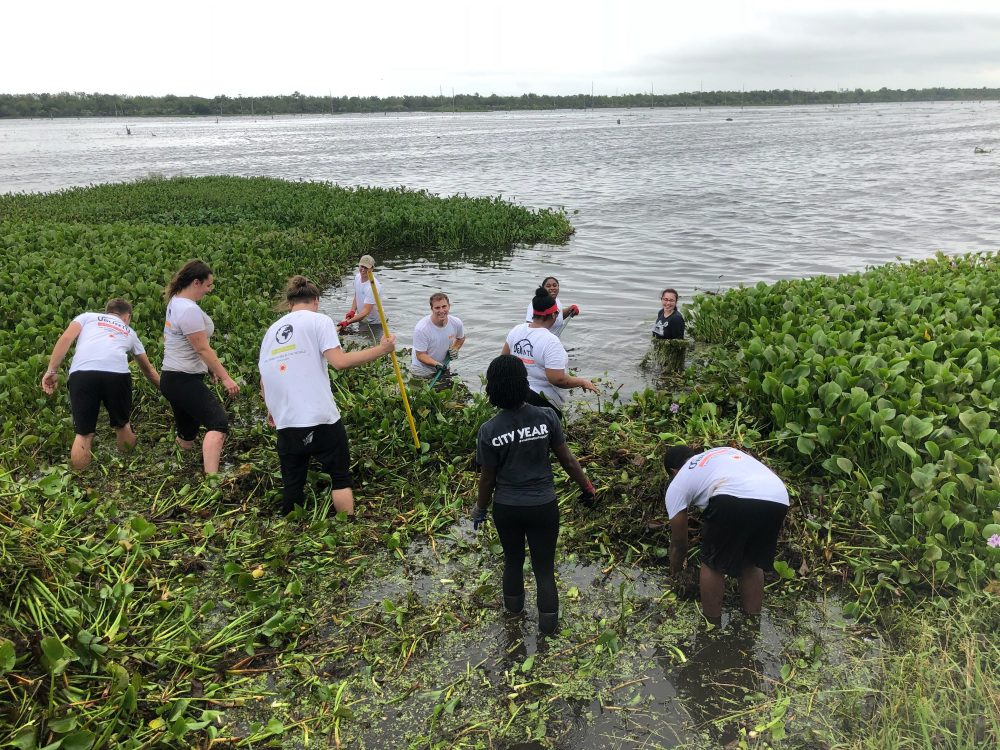

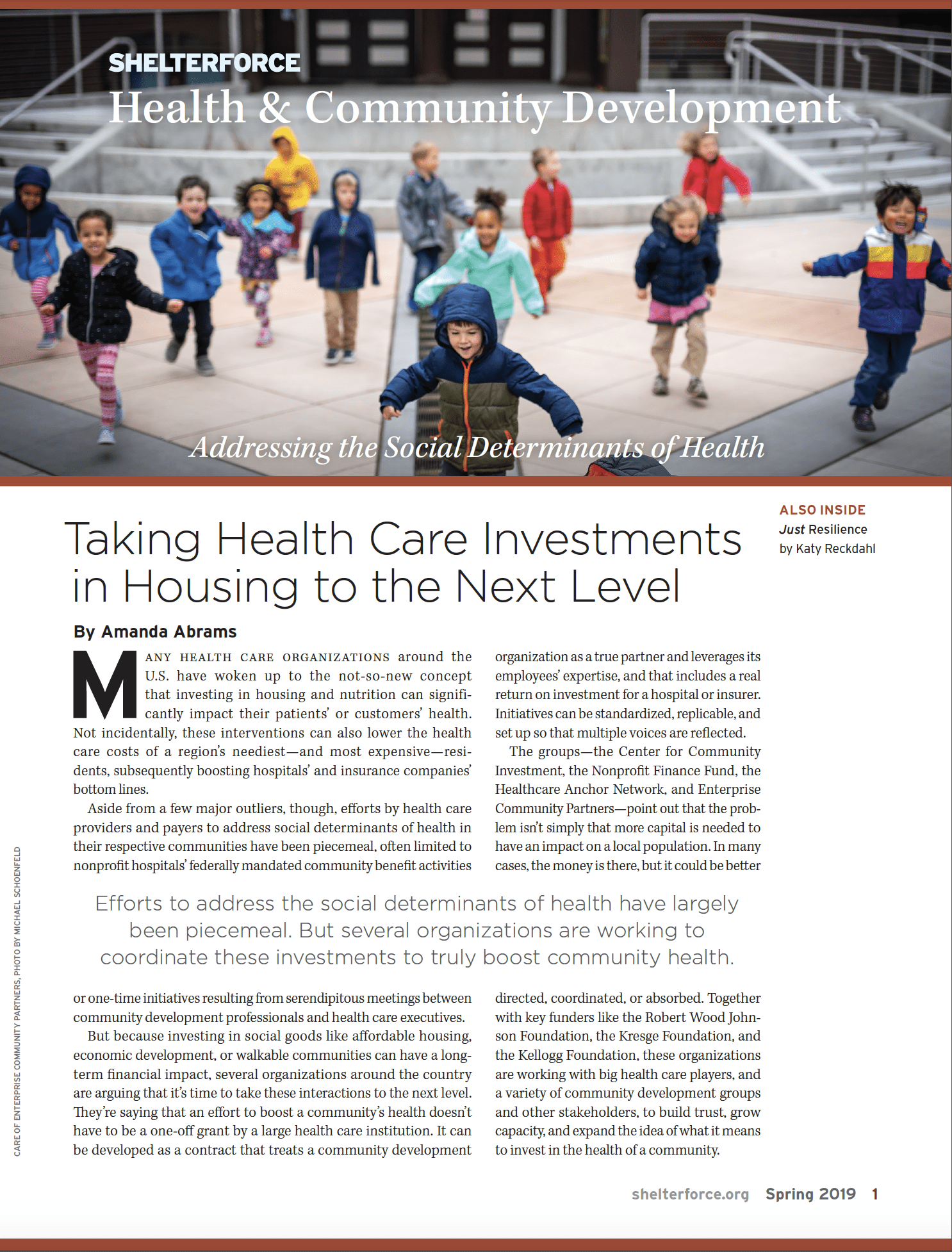
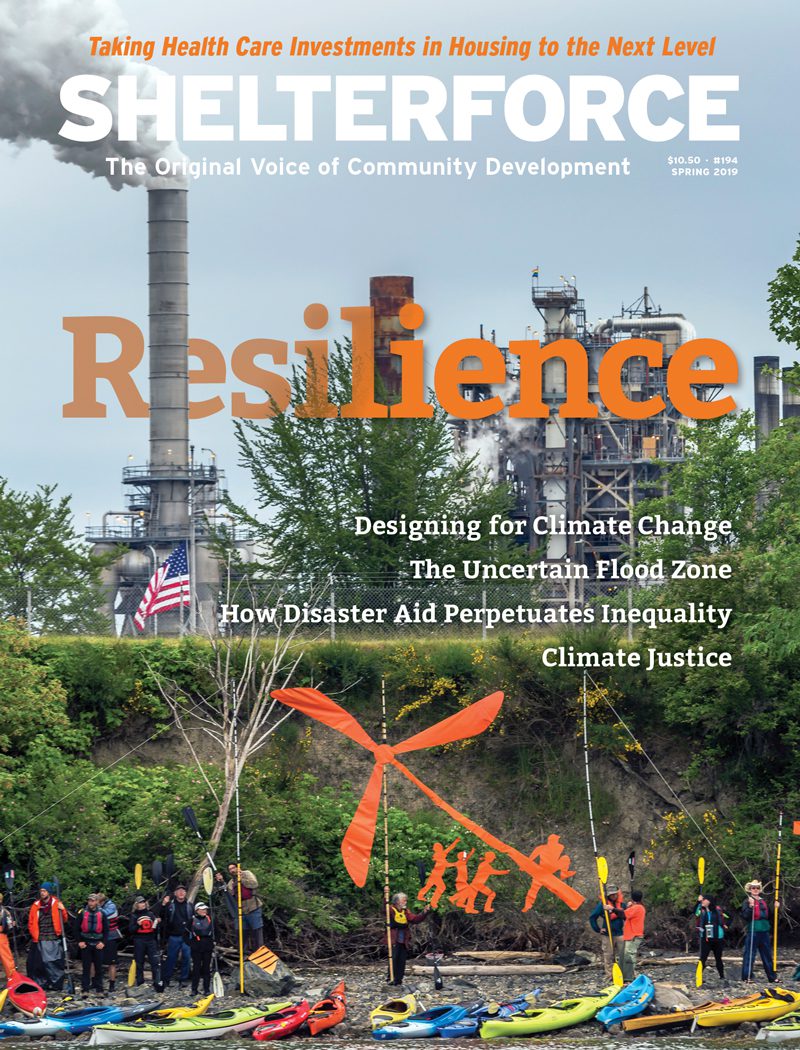
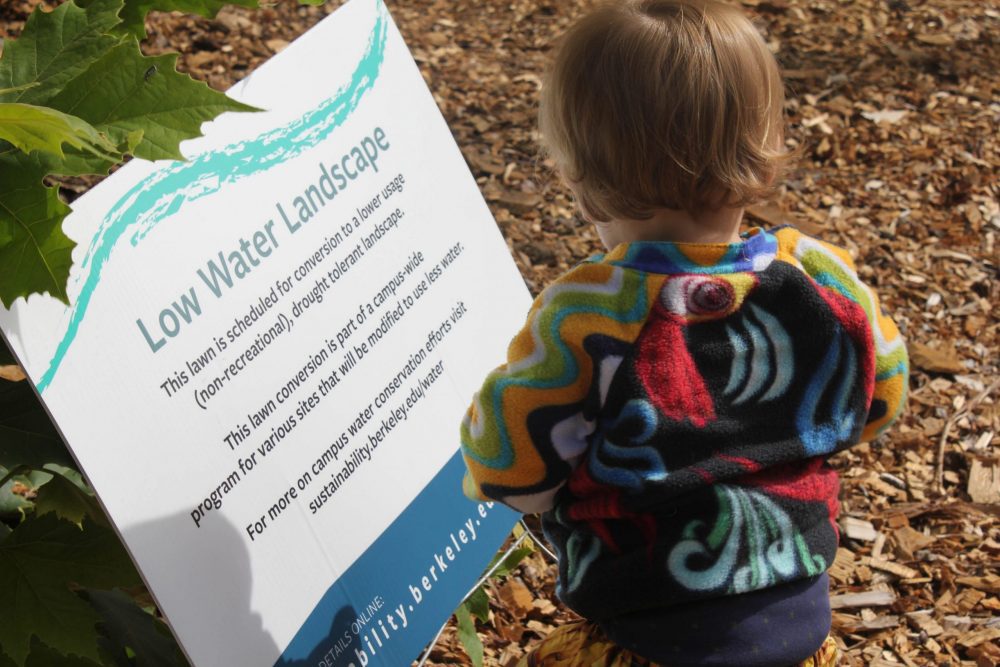
This sounds like a great project. However, while emotional and psychological wellbeing are important inclusions in conversations on resilience, if this work doesn’t address and transform the material conditions that shape vulnerability for too many in these communities it still misses THE key element.